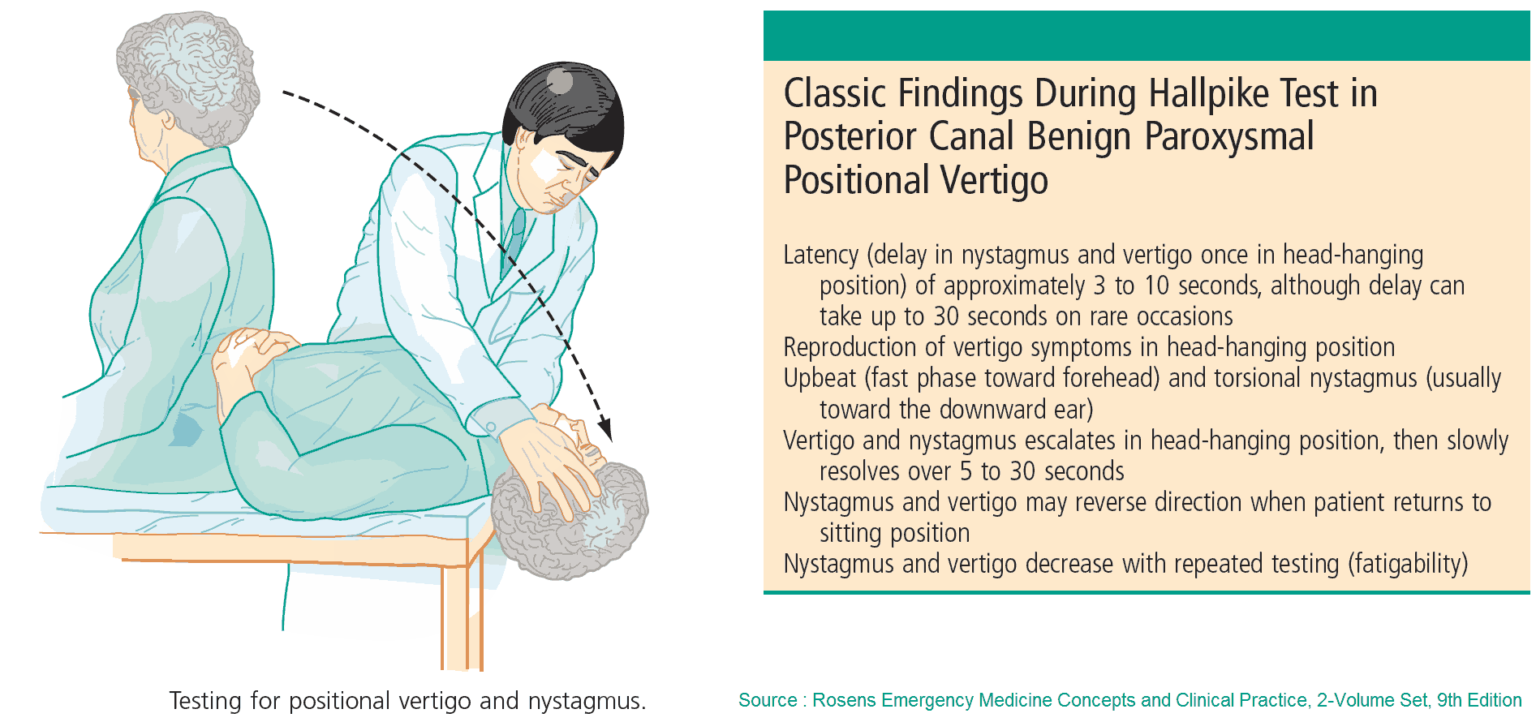
All subjects with abnormal responses, however, showed improvement.Īlthough clinicians continue to give patients home instructions and to use additional head rotation during the maneuver, these variations are not essential for achieving improvement in symptoms. Those subjects in the Augmented Epley group who had abnormal pretreatment posturography scores had significantly better posttreatment scores than those subjects in the Home Instruction group who had abnormal pretreatment scores.

Some subjects in each group had abnormal pretreatment scores on computerized dynamic posturography. All groups showed significant decreases in vertigo and Dix-Hallpike responses. Posttests from 1 week to 6 months showed no differences in vertigo intensity or frequency or responses to the Dix-Hallpike maneuver. Patients with unilateral benign paroxysmal positional vertigo of the posterior semicircular canal were randomized to a standard Epley maneuver group, a group that received an additional 45 degrees head rotation during the maneuver (Augmented Epley), and a group that received instructions about sleeping position after treatment. Additionally, if the patient does not respond to the Epley maneuver, additional testing may be necessary to determine other reasons for dizziness.To determine if using more head rotation during the Epley maneuver or specific posttreatment instructions for sleeping position would affect treatment effectiveness, compared with the usual maneuver without extra instructions. BPPV and Epley Maneuver Instructionsīefore performing this procedure at home, it is important to see your Ear, Nose, and Throat specialist to rule out any other reasons for your dizziness.

Namdar usually distributes this handout to his patients once a diagnosis of BPPV has been confirmed and the first Eply maneuver has been performed in the office under his supervision.

Please refer to the Instructions to Epley Maneuver attachment for specific instructions for how this procedure can easily be performed in the home setting. Study Design: Retrospective review. I generally recommend that patients perform the same procedure at home a few more times over the next week. Objective: Benign paroxysmal positional vertigo (BPFV) is a common condition seen by otolaryngologists.The purpose of this study is to determine the ability of the modified Epley maneuver to treat BPPV. In simple terms, the head is rotated in a certain direction, and the pull of gravity is used to pull away the crystal from the narrow ending where all the nerve terminals are into the wider reservoir where the crystal can settle and dissolve over time.

Wook Jang 1, Jung-Woo Shin 1, Sang Woo Kim 1, Do Hyung Kim 1, Chang Gun Cho 1, 2, Seok-Won Park 1, 2, Yun-Sung Lim 1, 2, Bo Hae Kim 1, 2, Joo Hyun Park 1, 2. Cupulolithiasis of benign paroxysmal positional vertigo involving the posterior semicircular canal (PC-BPPV-cu) is a rare form of BPPV. Once the diagnosis is confirmed, and is determined which is the affected side, the condition could be reversed with a simple office exercise called Epley Maneuver. Clinical Manifestations and Prognosis of Benign Paroxysmal Positional Vertigo according to Etiology. The Ear, Nose, and Throat doctor performs a Dix-Hallpike positional testing that usually confirms the presence or absence of the condition, as well as determining which is the affected side. The diagnosis of Benign Paroxysmal Positional Vertigo (BPPV) could usually be easily made in an office setting.


 0 kommentar(er)
0 kommentar(er)
